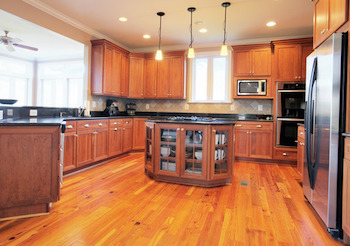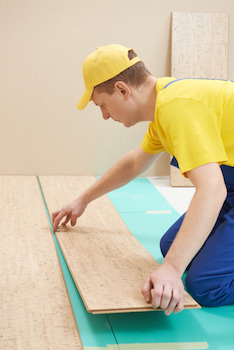Now that your hardwood flooring has been installed, there are a few tips to keep in mind to keep them beautiful for years to come.
If you haven’t already read:
Tips Before Your Hardwood Flooring Installation Process
Tips During Your Hardwood Flooring Installation Process
Start there. Then read on to discover a few important details you can start putting into action today.
 After installation:
After installation:
Nothing can damage hardwoods quicker than a deep, set in scratch. Before you place any furniture down, place a felt pad underneath for protection. You can find felt pads in any size and color; cut them to size to ensure a perfect fit.
For even more protection against scratches, dirt, and moisture, consider placing area rugs throughout your home. The key is using them where traffic is at its highest. You can use them in entryways, hallways, or in rooms where people spend a lot of time. Area rugs are perfect under dining room tables or along couches and chairs where feet are more likely to shuffle against the floor.
Clean and maintain your floors on a regular basis. In many ways hardwoods are easier to keep clean than other choices. A simple sweep can remove the dust and other small particles that have impact on your floors over time. Make sure you don’t use too much water, or allow water to puddle as this can ruin them quickly. Also be careful about using floor cleaners and waxes; check with the manufacturer or contractor for ideas on the perfect products to use.
Dents are also a common occurrence in hardwoods. The easiest way to avoid dents is to trim pet nails on a regular basis, and take off high heels when walking and standing on the floor. Dents can be a very costly thing to fix, so its important to take precautionary measures from the beginning.
Make sure the temperature of your home is a constant. Extreme changes in temperature can cause hardwood to expand or buckle, contract or create gaps between the planks. Because hardwoods are a natural product, it will react to new and changing conditions, including humidity changes. The more of a constant you can make your home, the more settled your hardwood flooring will be.

For all of your Denver Hardwood Flooring needs visit our site today.

